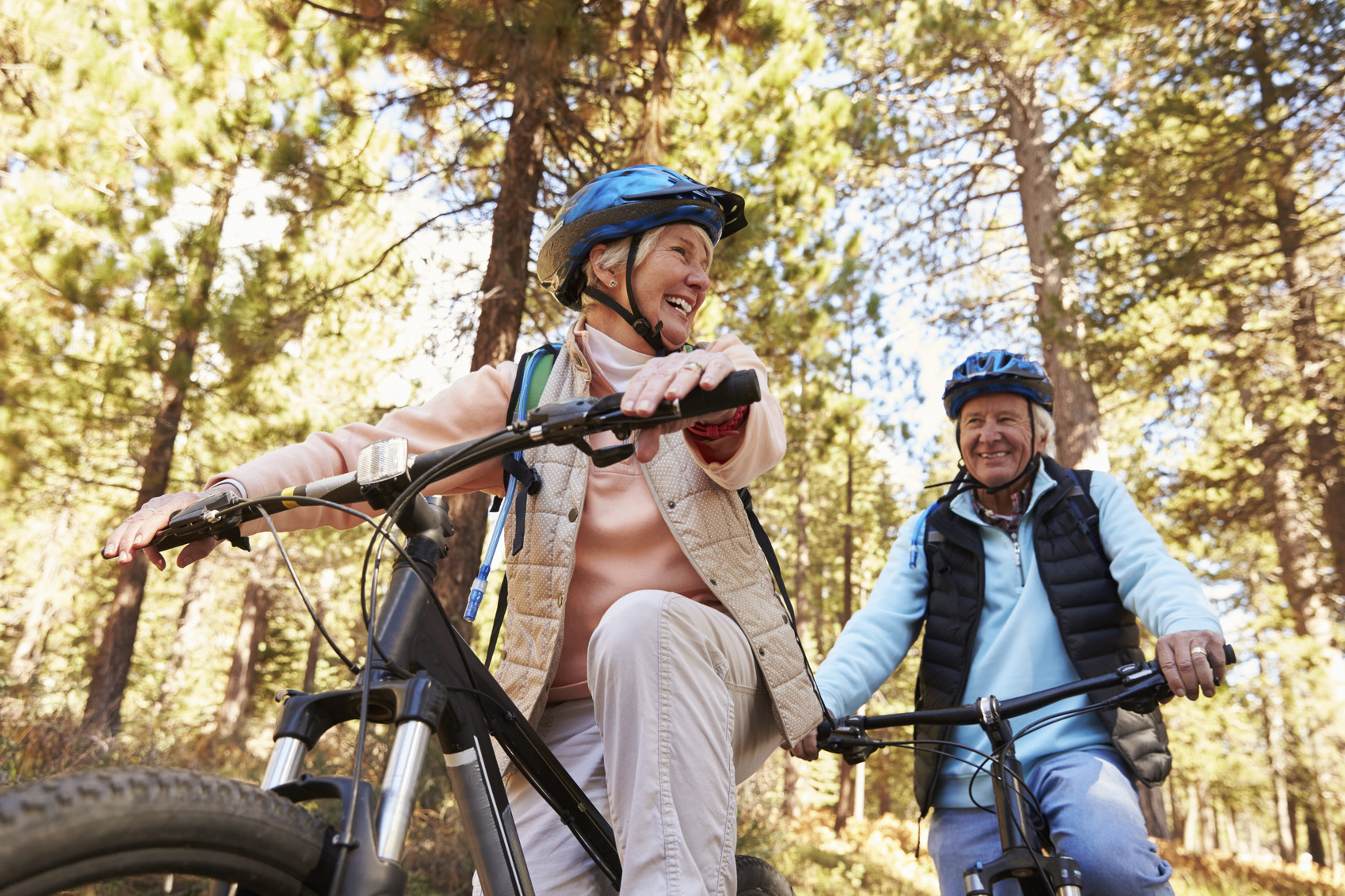Harvard Health Blog
Your best cycling days may still be ahead

I loved riding my bicycle as a kid, and whizzing along wooded roads with friends on crisp autumn days. For me, the images of blurred leaves and sunshine are still fresh, as are the feelings of freedom, joy, and the wind on my skin. Now, only an occasional bike ride with my children reminds me how much I love cycling.
But there are plenty of reasons to go for a ride, no matter what your age. "It's fun, it's socially oriented, and it gets you outside and exercising," says Dr. Clare Safran-Norton, a physical therapist at Harvard-affiliated Brigham and Women's Hospital. Plus, cycling is an aerobic activity, it's easy on the joints, and it helps build muscle and bone.
Back in the saddle
Hopping on a bicycle sounds easy enough, but it can be a little more challenging as we get older, with stiff joints that may make it hard to swing a leg over the top tube of a two-wheeler.
Fortunately, bike manufacturers are responding to meet riders' needs. One option is the step-through bike, a two-wheeler with a low or absent top tube. "I get emails from people who tell me they're riding for the first time in 20 years," says Tony Biria of Biria Bicycles, which in 2002 introduced a bicycle to the U.S. with a top tube that's just six inches off the ground. Beach cruisers and comfort bikes are also popular among older cyclers. All three of these bike types feature high-rise handlebars that enable you to sit upright; wide tires for a smooth ride; shock-absorbing seat posts; and lower top tubes.
Other bike types include tricycles, which are helpful if you are less stable on your feet; and recumbent bikes that allow you to lean back and ride. "If you have spinal stenosis, a recumbent bike puts your spine in a flexed position and gives you pain relief. But if you have a herniated disk, the bike can make the disk bulge more," says Dr. Safran-Norton.
Gear up
You can make cycling even safer and more comfortable with special equipment.
Cycling clothes have high-tech fibers that wick away moisture. They are usually neon-colored, with reflective material so you'll be visible to drivers. Bike shorts have a thick pad or chamois to prevent chafing and provide cushioning.
Bicycle seats (called "saddles" in cycling lingo) are available with extra padding, in wide styles that support the pair of bones you sit on. Go even further with a saddle that relieves pressure on the perineum, the area between those bones, behind the genitals. It's home to nerves and arteries that supply the lower body, and too much pressure here may cause numbness and tingling in the legs. Pressure-relieving saddles may have a "noseless" or horseshoe design.
Prepare before taking to the road
Getting a comfy bike and all the trimmings isn't enough preparation to hit the road. You'll want to consult your doctor first, especially if you have heart disease, arthritis, or thinning bones. "If you have osteoporosis, consider riding a tricycle, which is more stable than a two-wheeler, posing less of a fall risk. I'd advise that you don't ride a bike if you've had a recent fracture. Another fall could make it worse," says Dr. Safran-Norton.
When riding, remember that the seat height should allow a slight bend at your knee. "You don't want a straight knee at bottom of the pedal stroke, because the bike could be too tall and you could fall off," says Dr. Safran-Norton.
Other tips:
- wear a helmet
- don't use clips to keep your feet on the pedals, which can make injuries worse if you fall
- don't ride alone
- stick to bike paths instead of the street
- stay hydrated before, during, and after your ride
- and use sunscreen and sunglasses.
Minding these safety tips is crucial. Some evidence suggests that bicycle injuries among people over age 45 have risen dramatically since 1998. But as long as you take precautions, cycling is still considered a safe way to exercise, get around, and have fun.
And remember that having fun is really what this is all about. If you enjoy exercising, you'll be more likely to do it. In the case of cycling, it may even make you feel like a kid again.
Disclaimer:
As a service to our readers, Harvard Health Publishing provides access to our library of archived content. Please note the date of last review or update on all articles.
No content on this site, regardless of date, should ever be used as a substitute for direct medical advice from your doctor or other qualified clinician.












